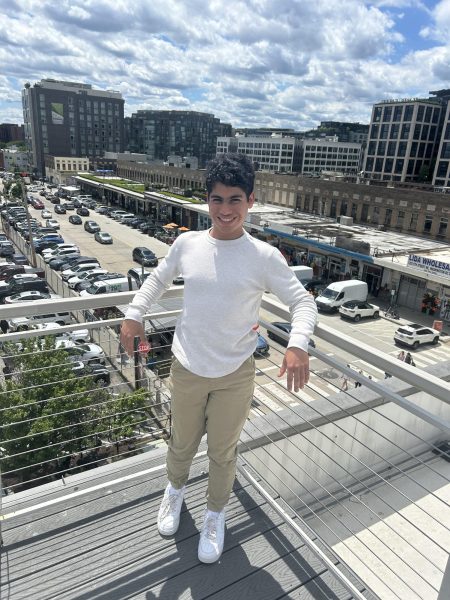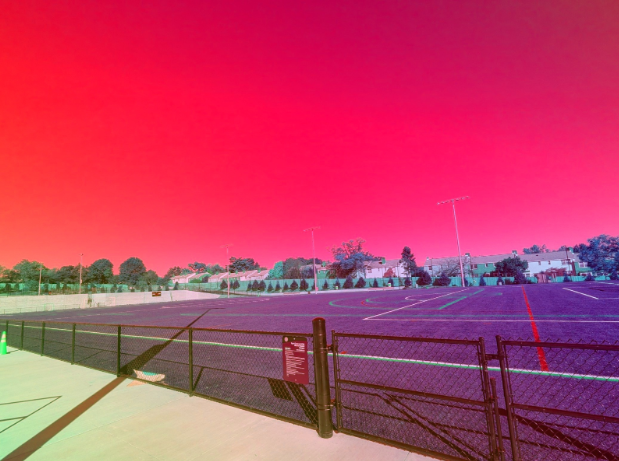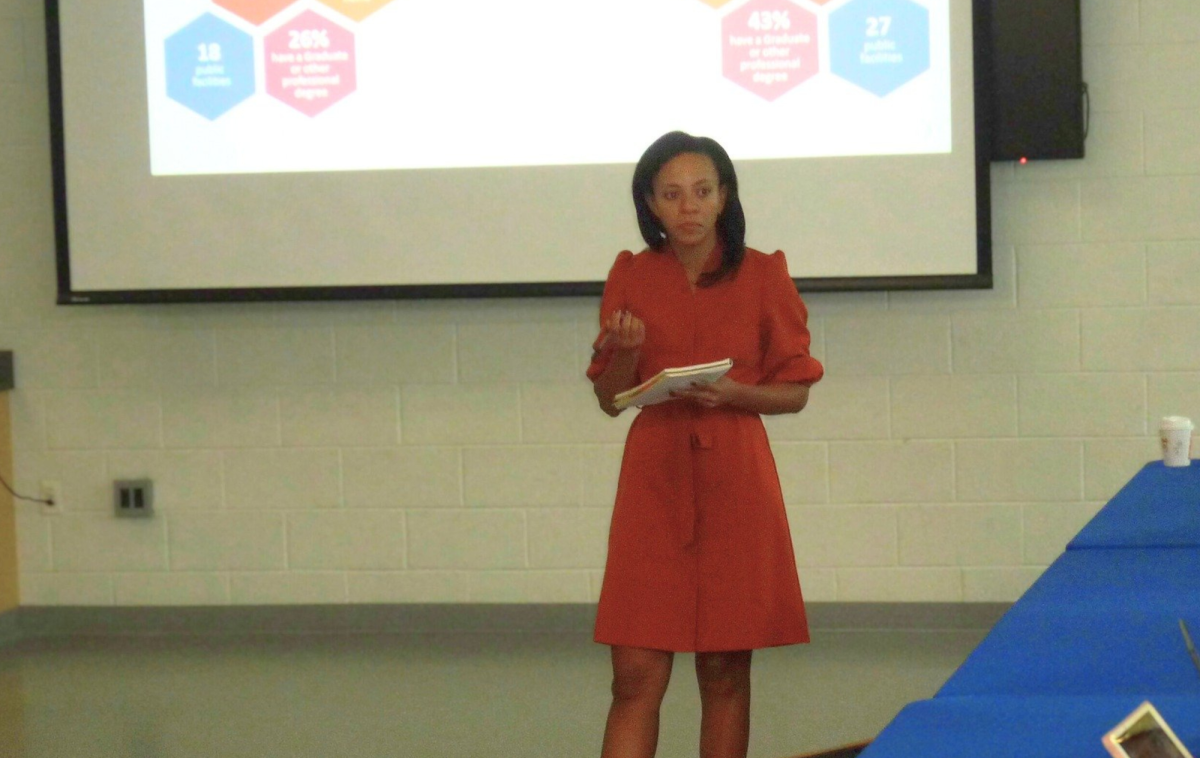Editor’s note: After school administration dropped the student digital ID policy in mid-October, Dean of Students Rhea Butler confirmed to Theogony on December 9 that the policy will resume sometime after winter break and that specific lunch blocks may experience “pilot” implementation before then. She noted that she believes it will be more efficient now because of an update to Minga.
[Updated Dec. 11 at 12:40 p.m.] When lunch time arrives, hungry students eagerly head to the cafeteria, but are now daunted with new requirements, a sea of administrators, long lines and a shortage of time. These changes come with the opening of Alexandria City High School’s new Minnie Howard campus as part of the school district’s “High School Project.”
Students in all three lunch periods at the King St. campus say they are troubled with the complexities of getting lunch in the cafeteria. Many students argue that there isn’t enough time to accomplish everything they need to in the 30 minutes they are given, especially with long lines due to a new ID scanning requirement. Additionally, there is no transitional time between lunch periods.
“Lunch is simply too short,” said senior Kimberly Estrada. “I think it’s dumb.”

Now, students at some entrances are required to scan into the cafeteria with their Minga digital student IDs, causing lines up to 10 minutes, according to a Theogony analysis. Accounting for roughly two minutes of walking time to the cafeteria, six minutes of waiting in line for food and the three minutes that are taken off the end of the lunch period to allow students to report back to class, students only have 19 minutes to eat lunch — one minute shy of CDC recommendations.
According to English teacher Jeffrey Hendriksen, one of his students said that they were not going to eat lunch anymore because they don’t have adequate time.
Movement during lunch is also heavily restricted now. There are numerous signs surrounding cafeteria entrances that tell students where they can and can’t go, along with administrators and security officers regulating student movement. Students are no longer able to eat lunch outside on the first floor. The rooftop garden provides another option, but it has limited space.
“The amount of administrators is a bit crazy, you can’t even enter the cafeteria through the second floor stairwell,” said senior Lex Richardson. “It’s a bit too much.”

These restrictions have shortened instructional time for teachers and harmed students who seek peer-tutoring during lunch.
“With already short lunches and now the requirement to scan IDs, people have less time to do things such as come by the writing center,” said Hendriksen, who also leads the writing center — a program with student tutors who help peers on writing work. “Anything that shortens the amount of time for people to get lunch and come back to the writing center has limited our ability to help students.”
As far as lunch lines go, the amount of students waiting to get lunch further slims the lunch period.
“It takes 10 minutes to get through the line and, after getting your lunch, there is not enough time to eat,” said Richardson.
For students with “A” or “C” lunch who travel between campuses, lunch time can be even shorter, as it can take up to 20 minutes to transport between campuses.
Many students believe that is not enough time to eat, as students, especially those with disordered eating habits, may suffer from harmful health effects.
In a written statement, King Street Campus Administrator Ashley Carter Sinclair said: “We recognize that there have been concerns about overcrowding and time constraints, and we are actively working to make improvements. One of the potential solutions we are exploring is expanding the number of possible eating areas to alleviate the congestion and provide more space for students during lunch. We are committed to creating a comfortable and enjoyable environment for students at all campuses.”
Some teachers are not upset about the changes.
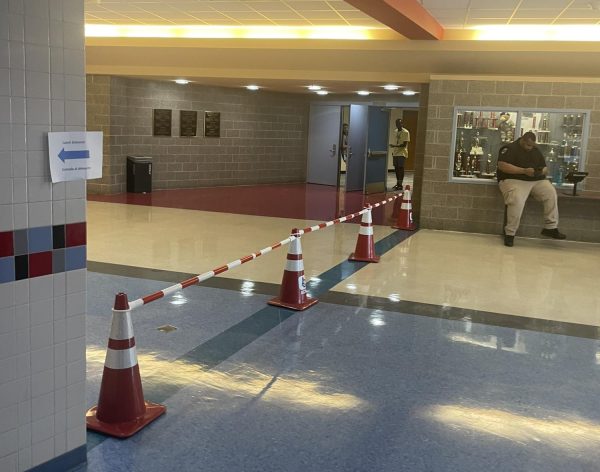
“I have been really fortunate because my 5th block and I have bonded over the lunch schedule,” said math teacher John Maes. “The only thing that has been a bit of a struggle is on test days, as I have to negotiate my students having ‘A’ lunch, and this year it has become a bit more difficult.”
Minnie Howard, which has a cafeteria on each level, does not face the same issues as the King Street campus. Since the students are divided by lunch time and level, there is less crowding in the Minnie Howard lunch periods.
“Lunch is chiller because everyone is divided around the entire school, which means you’re not confined. At Minnie you can go to any level you want,” said sophomore Brooke Hunnicutt.
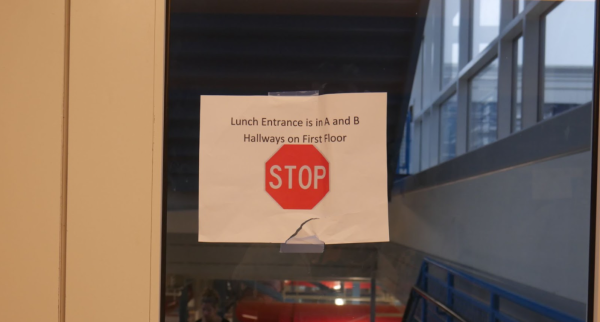
In a written statement, Minnie Howard Campus Administrator Lance Harrell said, “It is important for us to maintain this balance between giving students freedom while also ensuring a safe and orderly environment.”
Harrell said his goal is to reduce overcrowding and ensure students have enough time to eat lunch before they head back to class. So far, he said there have not been significant issues with overcrowding at Minnie Howard.
This article is part five in our series, “Inside the High School Project,” which covers the controversial ACPS initiative that the district says intends to connect students across the four ACHS campuses. However, the project has received significant pushback from students, teachers and parents. Read part one of our series here, part two here,part three here, part four here, part six here, and a bonus part, which was published in the Alexandria Times over the summer, here. Theogony will continue our coverage through at least the end of the 2024-25 school year.



